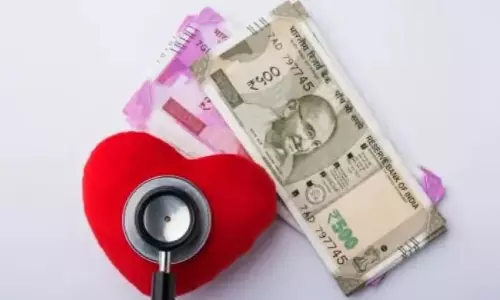
Current Indian government inherited weak economy due to excesses in UPA era: report
text_fieldsThe current government of India inherited a weak economy with multiple institutions in distress due to excessive practices during the previous UPA regime, claimed a report by global brokerage Bernstein.
The report highlighted that India's GDP has grown at a compound annual growth rate (CAGR) of 5.7% since 2014, with impressive growth of 6.7% excluding the impact of the COVID-19 pandemic. Although slightly lower than the UPA era's 7.6%, it is important to note that the UPA era benefited from a low base and a global upturn during a significant portion of that period.
It also noted that India has now climbed to the 5th position in global GDP rankings compared to the 10th position in 2014. Additionally, the country's per capita income rank, while still lagging at 127th, has shown improvement from 147th in 2014.
The period under review is marked by landmark reforms such as the Goods and Services Tax (GST), and notable success in controlling inflation. Factors contributing to this include lower hikes in minimum support prices (MSP), fortuitous fluctuations in crude oil and commodity prices, and prudent measures during the COVID-19 pandemic.
The employment scale has not been a major focus, as manufacturing initiatives did not unfold as expected. However, there has been a significant improvement in business perception, with a notable increase in ease-of-doing-business indicators.
Bernstein also said that India has made substantial infrastructure investments, rectifying mistakes made during the previous phase. Highways have witnessed nearly 60% growth in the last nine years, surpassing the ten-year performance of the UPA era by 20%. Rail investments have also quadrupled in the last six years. Port capacity has increased by 83%, leading to reduced turnaround times. The expansion of metro networks, the operationalisation of 73 new airports under the Udan scheme, and the development of smart cities have contributed to remarkable infrastructural growth in the past nine years.
Financial inclusion and digitisation emerged as significant success stories during this tenure.
The report highlights the substantial increase in individuals with bank accounts, which rose from 35% of the population in 2011 to over 77% by 2021, largely driven by the opening of 500 million Jan Dhan accounts since 2014. Direct benefit transfers have surged to over Rs 7 trillion in FY23, compared to Rs 74 billion in FY14. The effective utilisation of UID (Aadhaar-PAN linkage) has facilitated subsidised schemes while eliminating delays and intermediaries. Additionally, the Unified Payments Interface (UPI) has made remarkable progress, instilling confidence in expanding e-commerce digitisation through the Open Network for Digital Commerce (ONDC) and fintech credit through the Open Credit Enablement Network (OCEN).





















